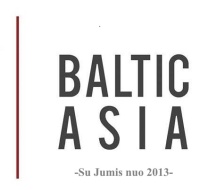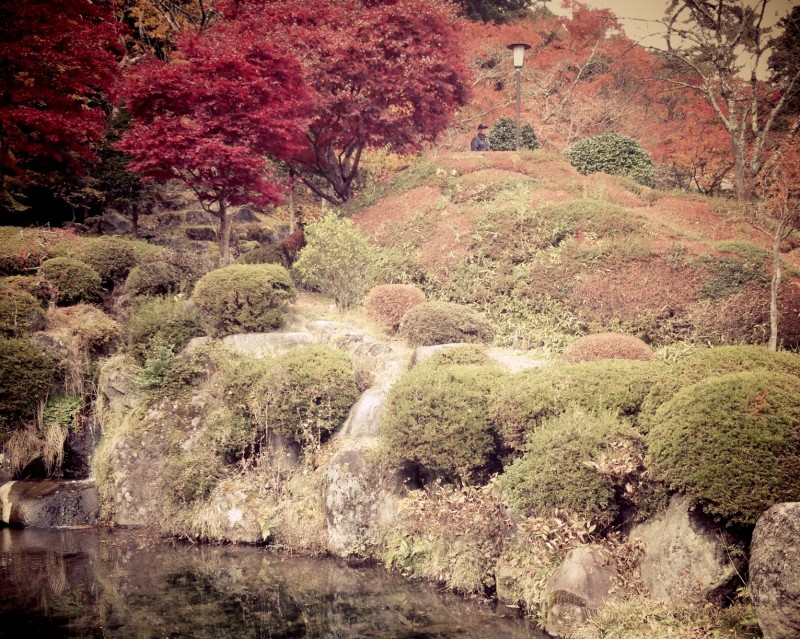Japan through Lithuanian Eyes
I thought about a trip to Japan for a long time, however the prices of trips organized by travel agencies deterred me from going there. This year I decided to jot down a route for myself; a trip that is organized by you yourself is a lot more interesting and cheaper as well. Now I can share my impressions and the lessons I learned from travelling to the Land of the Rising Sun.
When is it better to travel?
We can distinguish the two most beautiful seasons of the year in Japan: the spring – blossoming period and autumn – the red maple season in the months of October and November. There are many tourists during these seasons, although there is no shortage of tourists in summer when school students have their leaves and families may have a pleasant time spending their holidays together.
My trip started by searching for flights and cheaper airfares. Quite good airfare deals can be found on Holiday Pirates, Skyscanner and other websites. It’s also worth browsing the official websites of airlines. I have checked through these websites and notices that the prices of flights are lowest in autumn; so I made a decision quite quickly and purchased a ticket.
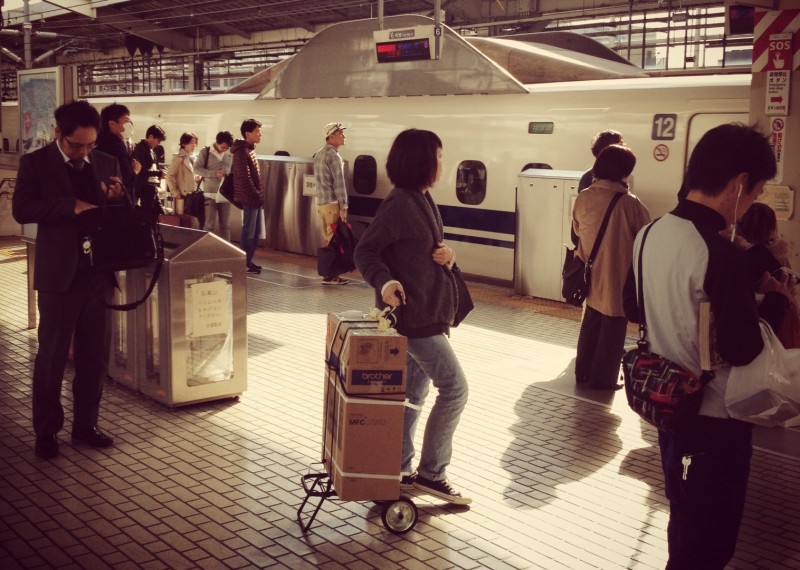
Shinkansen
Before going to Japan it is advisable to purchase a Japan Rail Pass. You will not be able to purchase this pass inside Japan. There are a few travel agencies in Lithuania that sell vouchers. These vouchers can be exchanged into Japan Rail Passes in the territory of Japan for a period valid for 7, 14 or 21 days. Vouchers can be purchase online, that’s a little bit cheaper than at the local travel agencies. Japan Rail Pass can be used only by foreign tourists and for Japanese people the price of this ticket, compared to the JR Shinkansen train ticket prices that you have to pay inside of Japan, is a real catch. The maximum operating speed of the Shinkansen train is about 300 km/h. The trip from Tokyo to Osaka with a distance of 515 km takes 2, 5 hours by the Nozomi train (the quickest) and 3 hours by the Hikari train. In these trains you may purchase snacks and refreshing drinks.
Japanese politeness
I was immediately charmed by the proverbial politeness of the people of Japan. Upon arrival in Japan Narita Airport, passengers are met by an airport employee who greets each passenger and bows down. These greetings, excuses and bows accompanied me everywhere – entering the metro, inside the Shinkansen train cars, guesthouses, shops.
Friendliness
The Japanese themselves willingly talk to foreigners and offer assistance. Once I was in an underground station reading a map and wondering how to get to the Kiyosumi Teien garden. The underground officer who was on duty quickly dashed to me and asked in English where I was going. She immediately explained which line to take and at which stop to get off. The officer also helped to purchase a ticket, though there was no particular need for that as you may select an English menu at ticket machines. However, I was very excited and thankful that the worker promptly pressed all the buttons and handed me a ticket and a map of the underground.
The next day I met a few passengers on the underground platform who asked if I need any help when I was exploring the map. One young lady took out her smartphone and checked with an app which line was quicker for me to take. I was left wondering whether the Japanese treat only foreigners so nicely.

People’s attention
For my first few days being Tokyo I noticed that locals curiously stare at me from head to toe in the underground train cars or even in the street, most likely because I was a foreigner from Europe. I felt that I was stared at mostly inside the train cars, probably due to the small spaces. Young local people who were also visiting shrines or other tourist attractions have asked me to take selfies with them. The tactics of youths around the world are similar – at first two friends approach me and ask to take a photo of them with their smartphone, so I kindly agree to do it. Afterwards they ask if they can take selfies with me.
Being in smaller cities and queuing for a funicular or a train, even Japanese people of senior age conversed with me. I knew some Japanese phrases as I have attended Japanese language courses before, so I could answer to simple questions in their native language. They were astonished that they could hear me speaking Japanese (I guess my pronunciation was very funny for them) and that I had arrived from so far alone.
Underground
Passengers waiting at the metro in Tokyo usually queue next to the sticker attached to the platform or yellow tiles. These markings signify that the train’s doors will be opened in front of these markings. In other stations I saw that passengers waited for their train forming two queues – on the right or left side of sticker or tiles. In a similar way they also waited for the bus – they queued in one line.
I noticed that in some underground stations there were pink stickers and with the writing “Women only” in Japanese and English. These cars can only be used by women in rush hours – in the morning from 6 a.m. to 9 a.m.
As the locals explained, this rule came into being due to the fact that men started groping women while riding the train. Naturally, I asked the locals, why such a rule did not exist in the evening, after work hours. It was explained to me that employees finish work at different times, and there are not so many passengers as during the morning hours and the stations are not so crowded.
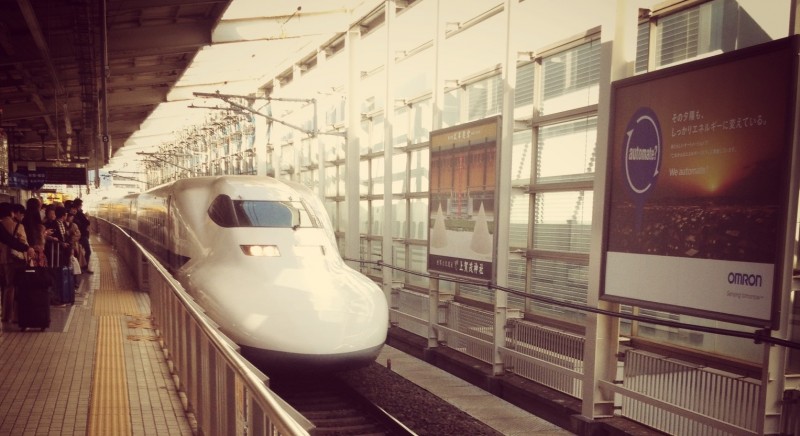
I noticed one unusual behaviour in the underground: young people do not notice senior passengers. In Lithuania (of course, I cannot speak about all of Lithuania) I was taught that if an elderly person with a cane gets on a bus or trolleybus I should offer him or her my seat. Once when I was going to Tokyo by train and an elderly couple got on a train. The woman had a cane, but unfortunately all the privilege seats for elderly, handicapped or pregnant women were occupied by young Japanese, who promptly pretended to be sleeping! So I got up from my seat and offered her to take a seat. I think, she was quite thankful as she took my rucksack on her knees and kept it there while we were riding the train. I’ve also noticed that Japanese people in general snooze a lot while riding the train or underground and when they approach their station they jump and quickly scoot through the door. Maybe the culture of snoozing and seeing nothing is specific for all major metropolises and Tokyo is not an exception?
Interestingly, you will not see any underground passenger eating snacks or drinking coffee from paper or other cups, although in Western Europe or the USA I could see many such situations.
Food products
It was quite astonishing to see packages of 3 potatoes or carrots in the grocery aisle at supermarkets. Once I had discovered a 1-kilo package of potatoes. Japanese people who had had a chance to visit Lithuania before told me that they had never seen rice packed in 0.5 or 1 kilo packages. According to them, they usually purchase 5-10 kilo packages of rice. Rice for them is like the potatoes or other vegetables for us.
Technologies
I believe most of you have read about the high-tech toilets of Japan. They are heated, you can hear water ripple sound effects, music and find various functions of bidet – stronger or weaker spouts of water.
As far as I know a sushi bar with a conveyor belt was opened in Vilnius recently. I did not have a chance to visit it, however while in Tokyo I visited a few of them. Customers may place special orders, but most of the time the simply pick their selection from a stream of fresh sushi moving along the conveyor belt. Different colours of plates reveal the price of sushi. Sometimes the same plates of sushi circle the belt 5 or 6 times passing the eyes of sushi bar visitors and not drawing his/hers attention. The price of a sushi plate (there can be 2-6 sushi on it) starts from 3 litas and you can have a lunch for an average of about 20-35 litas. When a visitor wants to pay for the lunch, a waitress comes with a piece of tech similar to a smartphone and it automatically counts the numbers of plates and shows the final sum. I have never ever seen such a tool before.
Cafes
When you take a seat in a café in Japan, a waitress immediately brings a small warm and wet towel for your hands. Usually in cafes (not sushi bars) a customer has to pay straight away after making an order. If you wish to order something later, you will have to pay again. I should stress that nobody leaves tips for the waiters. As local residents explained tips are not acceptable and would be normally considered as an insult. You have to pay the exact amount printed in the receipt and no more.
In Tokyo and in other cities French cafés and bagel shops are quite popular. You could see “Boulangerie Française” written in French on the windows of cafés. Being inside you can feel like in Europe and only the people surrounding you will reveal that it’s Asia.
It’s interesting that there are hot water faucets at the tables to make tea in sushi bars. You can drink as many cups as you wish. I saw such hot water faucets in the Tokyo “Skytree“ sushi bar.
Bicycle parking lots
I saw bicycle parking lots in the outskirts of Tokyo. It seemed that bicycles of some residents’ were not chained. It would be difficult to imagine this in Lithuania. The monthly annual price for parking a bike is about 25-30 Lt. Children’s bicycles, tricycles stand near the block of flats and they do not disappear.
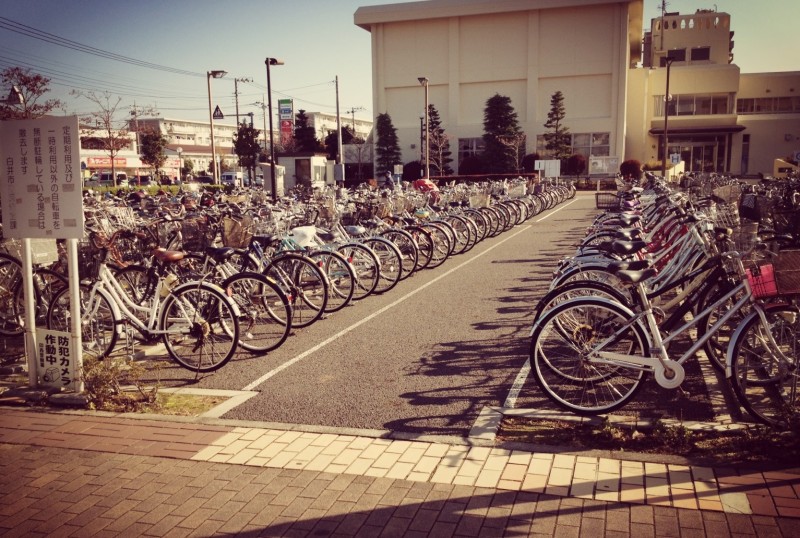
Cleanliness
What I missed in Japan – garbage bins in public spaces. At the same time I didn’t see any paper or other garbage in the streets. To not damn Japan with false praise, I must say I once I saw a creasy napkin on a windowsill on the train, but that’s about it. When I arrived to Japan the first evening I felt like I was in a completely different world – there were just hieroglyphs and curious Japanese eyes staring at me. I got used to the staring and incomprehensible hieroglyphs in a couple of days, whereas to understand their meaning it will take me quite a while to study.
Written by: Margarita Nikolajevaitė
Photos by: Margarita Nikolajevaitė
Edited by: Šarūnas Šalkauskas
